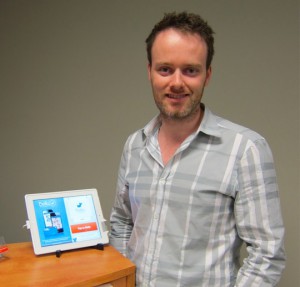Belly Increases Mobile App download Rate 200% With Twilio SMS API
Time to read:
This post is part of Twilio’s archive and may contain outdated information. We’re always building something new, so be sure to check out our latest posts for the most up-to-date insights.

How a successful startup satisfied its hunger for more mobile app installs

Belly, a Chicago-based startup that offers a unique customer-loyalty program, was doing well. In just eight months, it had signed up more than 200,000 users and expanded coast to coast, thanks to a quirky set of rewards and an engaging mobile app. The company had also attracted more than $12 million in venture backing from Lightbank, Silicon Valley Bank and Andreessen Horowitz.
But the management team wasn’t satisfied.
“We wanted to make the most of the traffic that was coming to the Belly website,” said Craig Ulliott, the chief technology officer. If a customer signed up for Belly’s program but didn’t install the mobile app, he or she would have a hard time finding Belly merchants and participating in the program. That represented a potentially lost opportunity in a highly competitive market.

Ulliott decided to try using SMS for mobile app distribution. After checking out various options, he chose to build a small app with the Twilio SMS API. Twilio was easy to add to Belly’s website (www.bellycard.com) and provided more flexibility and control.
Within 45 minutes, Ulliott tweaked the signup form on the website so that new customers who gave Belly their mobile numbers received an SMS with a link to download Belly’s mobile app. By including a bit.ly link in the SMS, Ulliott could easily track the number of messages sent and their click-through rate.
“We saw our download rate double after we added the feature,” Ulliott said. “We were thrilled.”
Ulliott said adding the few lines of Twilio-powered code helped remove friction. “To download a mobile app, you used to have to go to iTunes and plug in your phone, and it was sort of a pain. Now you can just sign up with your phone number and you get a text message. You tap a link in the message and it takes you to the app store. The barrier to entry is much lower.”
Related Posts
Related Resources
Twilio Docs
From APIs to SDKs to sample apps
API reference documentation, SDKs, helper libraries, quickstarts, and tutorials for your language and platform.
Resource Center
The latest ebooks, industry reports, and webinars
Learn from customer engagement experts to improve your own communication.
Ahoy
Twilio's developer community hub
Best practices, code samples, and inspiration to build communications and digital engagement experiences.


